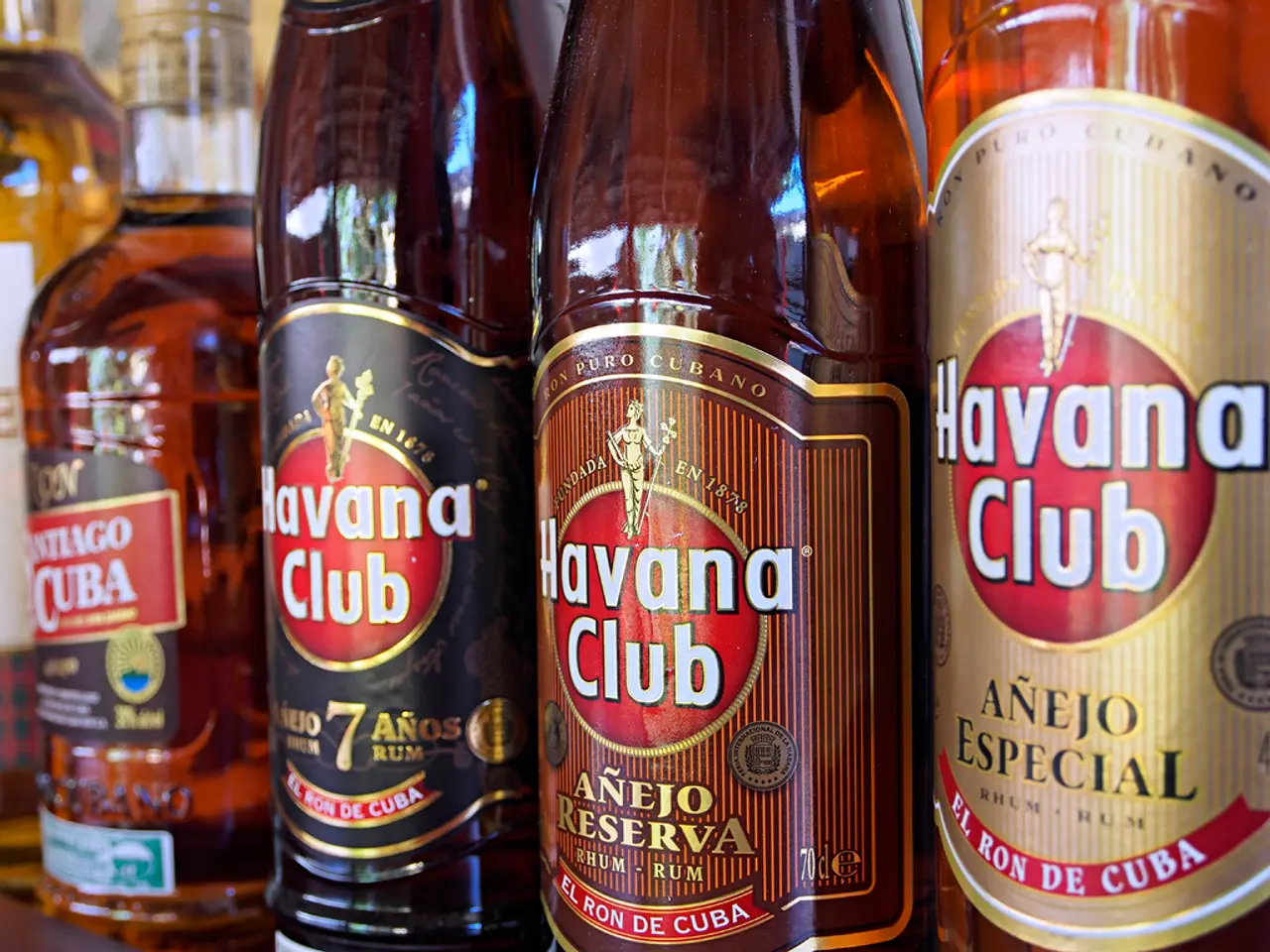Ten different intoxicating beverages beyond conventional alcohol
In today's health-conscious society, many are seeking ways to reduce their alcohol intake without sacrificing the flavour and social aspects of their favourite drinks. Fortunately, the market for alcohol alternatives has grown significantly, offering a diverse range of options for those seeking a healthier and more inclusive drink experience.
Non-Alcoholic Beers
One of the most popular categories of alcohol alternatives is non-alcoholic beer. These beverages are brewed using similar ingredients to traditional beer, including malted barley, hops, yeast, and water. The alcohol content is then reduced or removed using various techniques, such as stopping fermentation early, using special yeast strains, or vacuum distillation. This allows the beer to retain its traditional flavours and aromas while eliminating the alcohol effect.
Alcohol-Free Spirits and Aperitifs
For those who prefer the complexity of spirits, there are now alcohol-free options available. These drinks are crafted using botanical infusions, extracts, and blends of herbs, spices, flavours, and sometimes adaptogens. The aim is to replicate the mouthfeel and flavour profiles of spirits such as gin, tequila, or aperitivos, without the need for fermentation or distillation. Some of these drinks even include functional additives like nootropics, vitamins, or rare cannabinoids, providing relaxation or energy without impairment.
Cannabinoid and Hemp-Based Alternatives
Another innovative category of alcohol alternatives is cannabinoid and hemp-based products. These products use compounds from cannabis plants that offer stimulating or relaxing effects without alcohol intoxication. They come in edible or beverage forms, targeting wellness and recovery benefits rather than traditional alcohol effects. These products are vegan-friendly and increasingly popular for post-exercise relaxation or focused energy.
Low-Alcohol or Reduced-ABV Wines and Spirits
For those who still want a taste of wine or spirits but with less alcohol, there are low-alcohol or reduced-ABV options available. These products are made by limiting fermentation or through partial dealcoholization techniques similar to those used in non-alcoholic beers.
Mocktails
Mocktails are another option for those seeking alcohol-free drinks. These beverages are made using a variety of nonalcoholic ingredients to create flavourful and satisfying drinks. Infusing sparkling water with natural fruit flavours, herbs, or even bitters can create a refreshing and sophisticated alternative to alcoholic drinks.
In summary, the production processes for alcohol alternatives vary widely depending on the category. Non-alcoholic beers use brewing and alcohol removal technologies, alcohol-free spirits and aperitifs rely on botanical ingredient blends and sometimes functional additives without fermentation, cannabinoid-based alternatives are produced from cannabis extracts, and low-alcohol or reduced-ABV wines and spirits are made by limiting fermentation or through partial dealcoholization techniques. Each type is designed to replicate some component of the alcohol experience—flavour, social ritual, or functional effect—without the adverse effects of ethanol intoxication.
Choosing alcohol alternatives offers a range of benefits for those seeking a healthier lifestyle, such as improved physical health, better weight management, enhanced mental well-being, better sleep quality, safer socializing, and greater inclusion. Whether you're looking for a refreshing drink at a barbecue or a relaxing beverage after a workout, there is now a diverse range of alcohol alternatives available to suit all tastes and preferences.
- Depression can be a challenging condition to manage, but science is making progress in predicting its type and severity using bio markers and data analytics.
- Type 2 diabetes is closely associated with obesity, making nutrition and fitness-and-exercise crucial in its management.
- Psoriatic and ulcerative colitis are types of inflammatory bowel diseases that affect the digestive system, causing symptoms such as abdominal pain, diarrhea, and weight loss.
- Non-small cell lung cancer (NSCLC) is a type of lung cancer that accounts for about 85% of all lung cancer cases, and late-stage diagnosis is often a challenge in its treatment.
- PREP drugs are available to help protect individuals from contracting HIV, providing an important tool in preventing the spread of the virus.
- Multiple sclerosis is a neurological disease characterized by the immune system attacking the central nervous system, leading to symptoms such as muscle weakness, numbness, and cognitive impairment.
- Asthma is a type of chronic respiratory disease that affects the airways, causing symptoms such as breathing difficulties, coughing, and wheezing.
- COPD (Chronic Obstructive Pulmonary Disease) is a type of respiratory disease that damages the airways and results in breathing difficulties, primarily in older adults.
- Cancer is a complex disease that can affect various organs and tissues, with breast cancer being one of the most common types affecting women.
- Alzheimer's disease is a progressive neurological condition that causes the decline of cognitive abilities and memory loss.
- Crohn's disease is a type of inflammatory bowel disease that affects the entire digestive tract, causing symptoms such as abdominal pain, diarrhea, and weight loss.
- AQ is a type of air quality index that measures the level of air pollutants in a given area, providing information on the potential health effects.
- Science has made significant strides in understanding the benefits of health-and-wellness, fitness-and-exercise, and nutrition in reducing the risk of various diseases, including depression, diabetes, and cancer.




